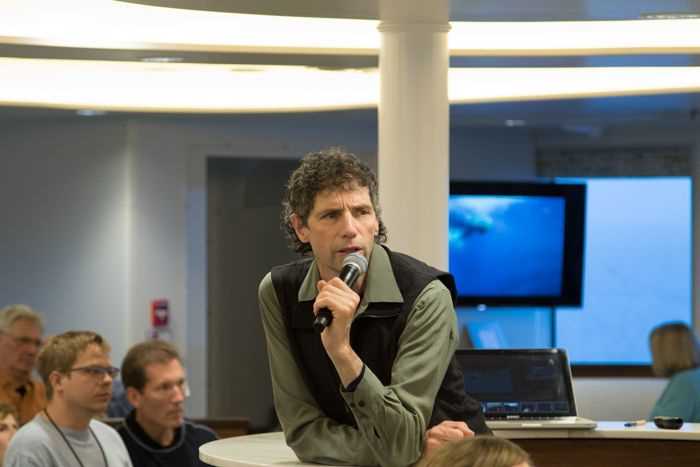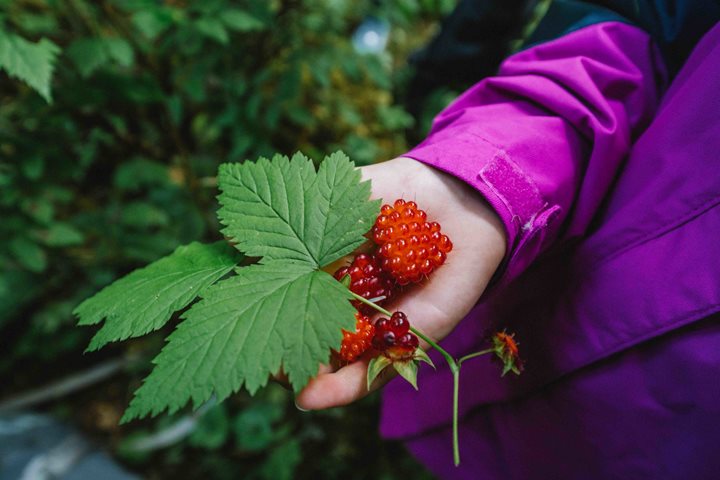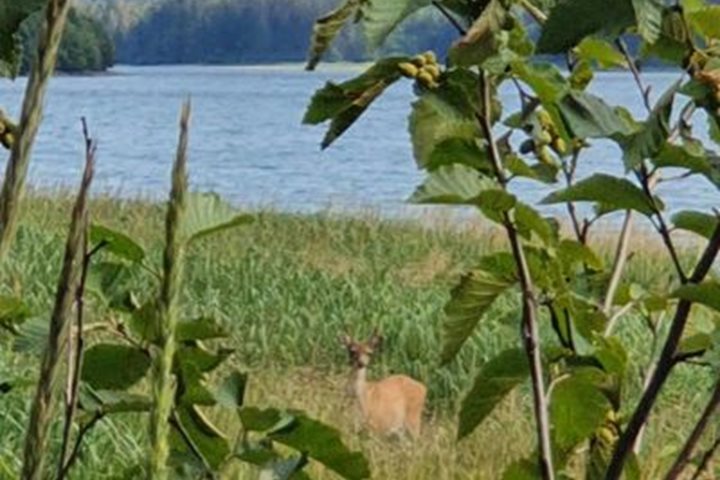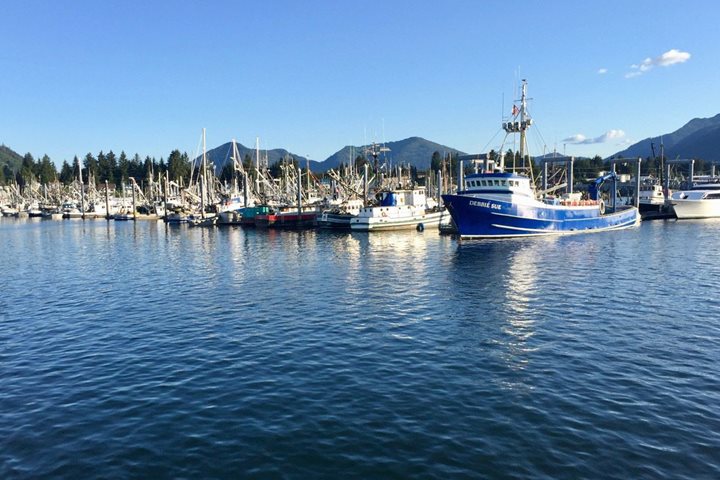The National Geographic Quest, the latest and greatest ship in the Lindblad fleet and the first expedition ship of her kind to be built in the USA in decades, motored into Saginaw Bay at the north end of Kuiu Island this morning. The weather was typically Alaskan: fair with overcast skies and moist air, but the temperature was quite warm and enthusiasm was high. The first true landing of our voyage in Southeast Alaska was a splendid example of the environment we will be seeing on our trip. The beach we landed on was however of a unique form. While the flora was typical of the region, the geology was anything but so. Limestone cliffs that flank the bank loomed above the landing site, providing excellent footing for some beachside plants, which the naturalists were very happy to discuss and share. What’s more, these cliffs, formed near the equator around 420 million years ago, also have encased a myriad of fossilized creatures that have gradually been brought to the surface of the stone and even fallen onto the beach. Fossil hunting around the area can be very productive, educational, and exciting.
The natural history staff at Saginaw offered a cluster of interesting options for exploring the area. A bushwack hike headed out over land to explore the forest off-trail. They were fortunate to encounter not only the all-star list of Southeast Alaskan native fauna but some very interesting plants found no further north. Moderate walkers explored the forest as well as the shore and were treated to the displays of jumping fish in the bay and the dark of the forest within. Kayaks and paddleboards were also offered in two different rounds so those that chose a walk earlier could still have a relaxing paddle in the charming bay. Those on the water were happily witness to sea otters floating in the tide and eagles roosting in the trees above.
After returning to the ship we hauled up the trusty anchor and began our march towards Warm Springs Cove on Baranof island for our rendezvous with Fred Sharp, founder of the Alaska Whale Foundation. To our surprise, we encountered a group of humpback whales in the midst of cooperative bubble net feeding. It was a brief look due to the shallow water in that area but it was an excellent primer. Dr. Sharp was quick to educate us about the delights of Alaskan cetacean ecology and the role the Alaska Whale Foundation plays in the conservation of these beautiful and mysterious creatures.







